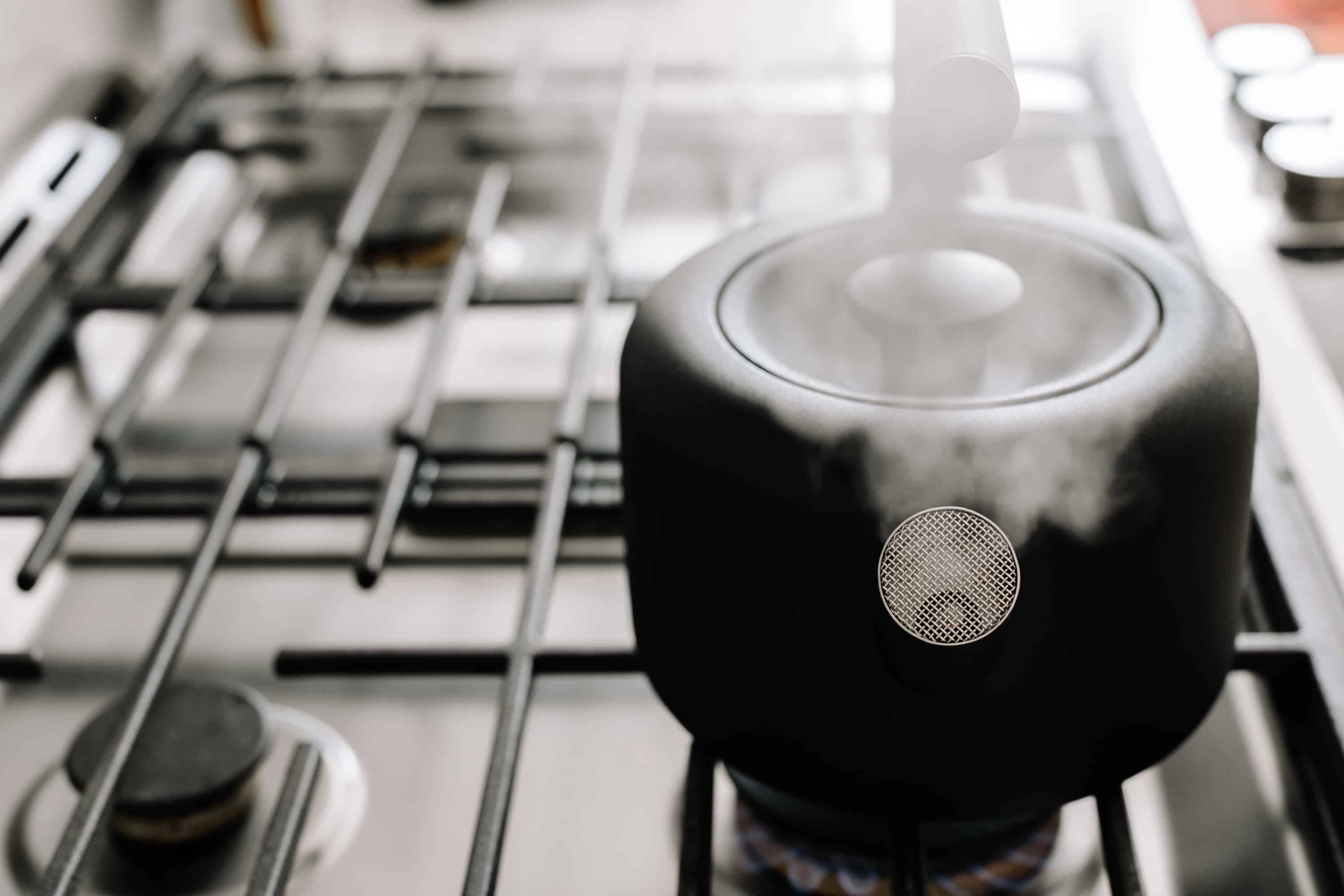Iron Japanese tea kettle meets Scandinavian design meets curling stone was the conversation that kick-started the design of our newest product. Our product team got to work by first taking everything they knew about the classic whistling kettle and tossing it out the window. We started from scratch to push the limits on what a kettle can and should be. The final product? Clyde Stovetop Tea Kettle.
To dive deeper into the design process behind our sleek update to a stovetop staple, we sat down with the product designer Julian Bagirov and Fellow’s founder Jake Miller:
What was the inspiration behind Clyde’s design?
Julian: The design process for Clyde was very deconstructive. I wanted to completely take apart all the elements of a kettle and put them back together in a simpler and more user-friendly way. With Clyde, we wanted to make a robust and large volume kettle that is easy to use and comfortable to hold, pick up, and pour. We started with a comfortable and easy to hold handle where the center of weight is at the center of the handle and the natural holding point. The overall shape of the kettle is clean simple and iconic where all the elements are clear in their purpose and function.
Jake: And to add to that, we all know that every stove in America has basically the same clunky, mundane tea kettle displayed on the burner. The whistling kettle is just one of those classic kitchenware appliances that come to mind when you think of your grandma’s or mom’s house. I knew we could build a new kettle that not only looked great in a modern kitchen but could also meet Fellow’s high-performance specs.

Fellow already makes two stovetop kettles. Why launch a third?
Jake: Our fans love the Fellow aesthetic but not all coffee users need a pour-over spout for their brew method of choice. For French press, AeroPress® Coffee Maker, or cuppings, the super slow and controlled pour Stagg provides is too tedious. And, a lot of people simply prefer tea over coffee. We’ve also gotten a lot of feedback from folks that want a kettle where you can serve multiple people. We refer to Clyde has a “workhorse kettle” because of its large 1.7 liter boiling capacity. Lastly, one of the biggest drawbacks with a gooseneck pour-over kettle is that given the spout design, there isn’t a whistle. Clyde is our first kettle with a whistle, and it’s no ordinary whistle.
You can’t leave us hanging. What makes Clyde’s whistle so special?
Julian: The whistle on most, if not all, stovetops kettle is an annoying pain point on the product. It informs you the water is boiling in the most extreme and stress-inducing way. With Clyde, we saw an opportunity to completely rethink how this works. We wanted to inform the user but in a calm and pleasant way. This lead us to explore how we can incorporate a musical note into the kettle. After exploring dozens of options we landed on a dual reed and ball design that lets the pressure out at the right time as the water is boiling, which in turn makes the reeds vibrant and create a pleasant sound. It is really a very magical part of Clyde.
Jake: Our engineer Drew worked for months on calibrating reed length to vibrate at frequencies that sounded like great together. He lost a lot of sleep over those reeds, but we couldn’t be happier with the final harmonizing combo. In addition, Clyde’s whistle not only sounds better than the traditional screeching banshee kettles on the market, but the mechanism to create the whistle provides a more intuitive pour as well. Most stovetop kettles are designed with a lid on the spout that needs to be opened before pouring. You either have to grab a towel to flip open the spout lid or use your shirt because it’s so hot or shooting steam. That’s a completely unnecessary step. Our magic whistle does not require a lid which means you can pour with one hand. When you’re pouring 1.7 liters of boiling water, you probably want as much control and ease as possible. Clyde provides this!
What other problems with the classic stovetop tea kettle did you fix with Clyde?
Julian: We wanted to fix a few things about the classic kettle. A major aspect we wanted to fix was just how comfortable and balanced we can design a kettle to be. We started by making a simple and comfortable handle to grip that is well balanced and is at the center point of all weight. We also incorporated a large lid opening that is very easy to fill.
Jake: The handle was really important to us, and Julian knocked it out of the park. A lot of big stovetop kettles do have a handle that hangs over the top of the kettle like Clyde, but there was always something that kind of left us wanting more. The handles were never robust enough or the material felt cheap. We wanted a feeling of satisfaction when holding Clyde without any strain on the wrist given the large water capacity. The final handle is really robust, but it also feels luxurious because it’s wrapped in soft-touch silicone.

Convinced to part ways with your current tea kettle? Add Clyde to your collection!


































